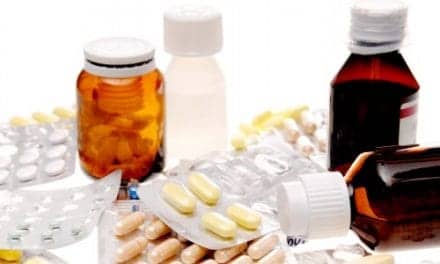One key to several problems facing hearing healthcare—including an aging population and access to qualified professionals—is available now. We need? tele-audiology.
Tel•e•audi•ol•ogy [tel’e-audi•ol o•gy]: The use of electronic information and telecommunications technologies to support remote and distance clinical hearing health care, professional and public education, public health matters, and health administration.
Telehealth is used successfully in some manner by almost every medical and allied health specialty area. Audiology has been slow to accept and develop this system of service delivery; however, if we can learn to manage and use these new communication technologies to our advantage, they will permit us to supply our services without face-to-face contact to patients who need hearing care—rather than waiting for the patients to find their way to us (which might never happen). To be sure, there are numerous problems to be resolved: billing and collections, cross-state licensure issues, equipment costs, availability and restrictions, and not the least of which is the reticence of hearing healthcare providers to change their current methods and try something new. (Editor’s Note: Although our field has been referring to this subject as “tele-audiology,” the term is not meant to exclude any licensed hearing care professional, such as hearing instrument specialists, ENTs, etc.)
Hearing care professionals have been struggling for years to draw more people with hearing impairment into our offices and clinics. In spite of the advancements in technologies and the increased attention that has been given by the media to the adverse effects of hearing loss on quality of life issues, the growth in the number of people seeking hearing care is moving forward at a snail’s pace.

Perhaps it is time for us to stop waiting for patients and clients to come to our offices and begin thinking of methods by which we can take our services directly to those who need them? It is a world of convenience out there; and apparently no one wants to go out of their way to receive services of any kind. We can have groceries delivered to our homes; we do our banking and bill paying from our living rooms; and we can arrange for all the personal services we need to come to us so that we don’t ever have to get in our cars and fight the crowded highways and search for available parking spaces. Social media, taking full advantage of the many available technologies, is apparently the preferred means of personal communication for millions of people. Face-to-face electronic conversations have become routine, all growing out of the fact that much of the world now has access to the Internet.
Now what’s that got to do with hearing tests and hearing aids? Experiences in past years with home-based evaluations of hearing and delivery of hearing aids have been fraught with problems, often from on-site high-pressure sales calls. A direct-to-consumer (DTC) sale of hearing aids through the Internet omits the professional services we believe is necessary for optimal patient satisfaction with their amplification devices.
But we must acknowledge that today’s technological advancements have opened the doors for the creative development of distance delivery of hearing services through a variety of available advanced communication and video systems. In fact, it may be that acceptance and embracement of these new methods for distant delivery of hearing services will be the ultimate saving grace for the future of our profession.
As hearing healthcare providers today, we face at least two critical problems that make the provision of hearing services in the future problematic:
- The aging population. The well-acknowledged “graying of America,” or the growth in our senior population, is a reality that demands change in our delivery of hearing services. Today, people age 50 and over comprise 24% of the US population, with 17 million Americans between the ages of 75 and 85. By 2050, that number will likely reach 30 million, according to the National Institute on Aging. There are now more than 30 million Americans over 65 (more than 12% of the population). Every decade this group increases by some 6 million people. At the same time, remember that one-third of all Americans—the Baby Boomers—were born between 1946 and 1964. This large segment of the population is quickly approaching its graying years, which guarantees that our responsibilities to provide hearing services to older people will command our attention well into the next century.
- Trained professionals. The second critical problem we face today is that we just do not have enough hearing care professionals to meet these growing needs in future years. It has been well documented that there is minimal, if any, real growth in the numbers of audiologists being trained in university programs. The number of new audiology professionals entering our field each year is neutralized by the nearly equal numbers of senior audiologists reaching and seeking retirement. It should be an alarming fact to us all that continuing to follow our current cumbersome systems for delivering hearing care is a hopeless way to grow our profession. We simply do not have the man (or woman) power to meet the ever-growing future demands for our services. Do we have the fortitude to look ahead at the demands that will come at us in the future, and can we plan a better way to provide clinical hearing services?
So that brings us to this special issue of The Hearing Review devoted to tele-audiology. Hopefully, readers will have an increased awareness to the opportunities for change in a number of areas in which we can immediately adopt tele-audiology services in our daily work. Hearing healthcare providers must find more creative and cost-effective ways to deliver hearing care if we are to survive as a profession.
Tele-audiology applications allow for virtual communication, using real–time audiovisual information transmitted over between a patient and a hearing care provider, each located at a different site. Use of this technology has the potential to dramatically reduce the cost, while increasing the efficiency, of providing hearing healthcare. By changing the way patients are evaluated and managed, from the traditional methods of in-person care to remote care possibilities, tele-audiology may also improve access to patients living in areas where hearing services were essentially not available in the past or for whom a trip to a practice/clinic represents a major challenge and hardship due to disability or distance.
We are indeed fortunate to have as contributing authors to this special issue, several recognized authorities who have extensive experience with tele-audiology applications that will be of interest to all readers. De Wet Swanepoel, associate professor in audiology at the University of Pretoria in South Africa, was one of the first to realize tele-audiology could have a tremendous impact for providing clinical hearing services in his country because of the vast distances involved with the remote locations of so many villages. Jason Galster and Harvey Abrams of Starkey Hearing Technologies have a unique understanding and expertise in the numerous advances in hearing aids that have been designed for remote programming and fine tuning. Deborah Hayes, co-chair of the Bill Daniels Center for Children’s Hearing, Children’s Hospital-Colorado, has been involved in the development of tele-audiology for pediatric hearing services coordinating and communicating with 12 satellite clinics spread across Colorado, as well as working with international sites where some aspects of pediatric hearing care require the skills and diagnostic acumen of a major children’s hospital center staff and equipment. Richard Gans, founder and CEO of the American Institute of Balance, describes a new tele-education program for his online global platform designed to teach aspiring students, and he describes for us his International Hearing Care Technician program. Another international author, Deborah Ferrari, from the Department of Fonoaudiologia at the University of Sao Paulo has been working nearly a decade with tele-hearing services, as Brazil was one of the first countries to fully encourage and support the remote provision of health services.
The US Veterans Administration Health Service system has been using tele-medicine for some time to monitor the health and well-being of thousands of patients nationwide—many of them older veterans living in areas far away from VA Medical Centers. A description of pilot audiology programs under study by the VA Audiology-Speech Pathology is described by Kyle Dennis, Chad Gladden, and Colleen Noe of the VA.
These authors provide a sampling for us of the implementation of tele-audiology that is already under way and in place. Their topics are by no means completely inclusive of other areas in which tele-audiology hearing services currently are being used or under development for future applications. In fact, it seems entirely likely that, in the future, creative electronic distance hearing service programs will be developed and implemented that we haven’t yet imagined.
So we hope you will take some time to read our experts’ wide variety of applications of tele-audiology and give thought to how you might incorporate distance-based services in your practice.
ALSO IN THIS SPECIAL ISSUE (OCTOBER 2012) ON TELEAUDIOLOGY:
- Extending Hearing Healthcare: Tele-audiology, by Jerry Northern, PhD
- The Need for Tele-audiometry, by De Wet Swanepoel, PhD
- Are You Ready for Remote Hearing Aid Programming? By Jason Galster, PhD, and Harvey Abrams, PhD
- Infant Diagnostic Evaluations Using Tele-audiology, by Deborah Hayes, PhD
- Online Global Education and Training, by Richard E. Gans, PhD
- Therapeutic Patient Education via Tele-audiology: Brazilian Experiences, Deborah Viviane Ferrari, PhD
- Telepractice in the Department of Veterans Affairs, by Kyle C. Dennis, PhD, Chad F. Gladden, AuD, and Colleen M. Noe, PhD
CORRESPONDENCE can be addressed to:
Citation for this article:
Northern JL. Extending Hearing Healthcare: Tele-Audiology Hearing Review. 2012;19(10):12-16.






